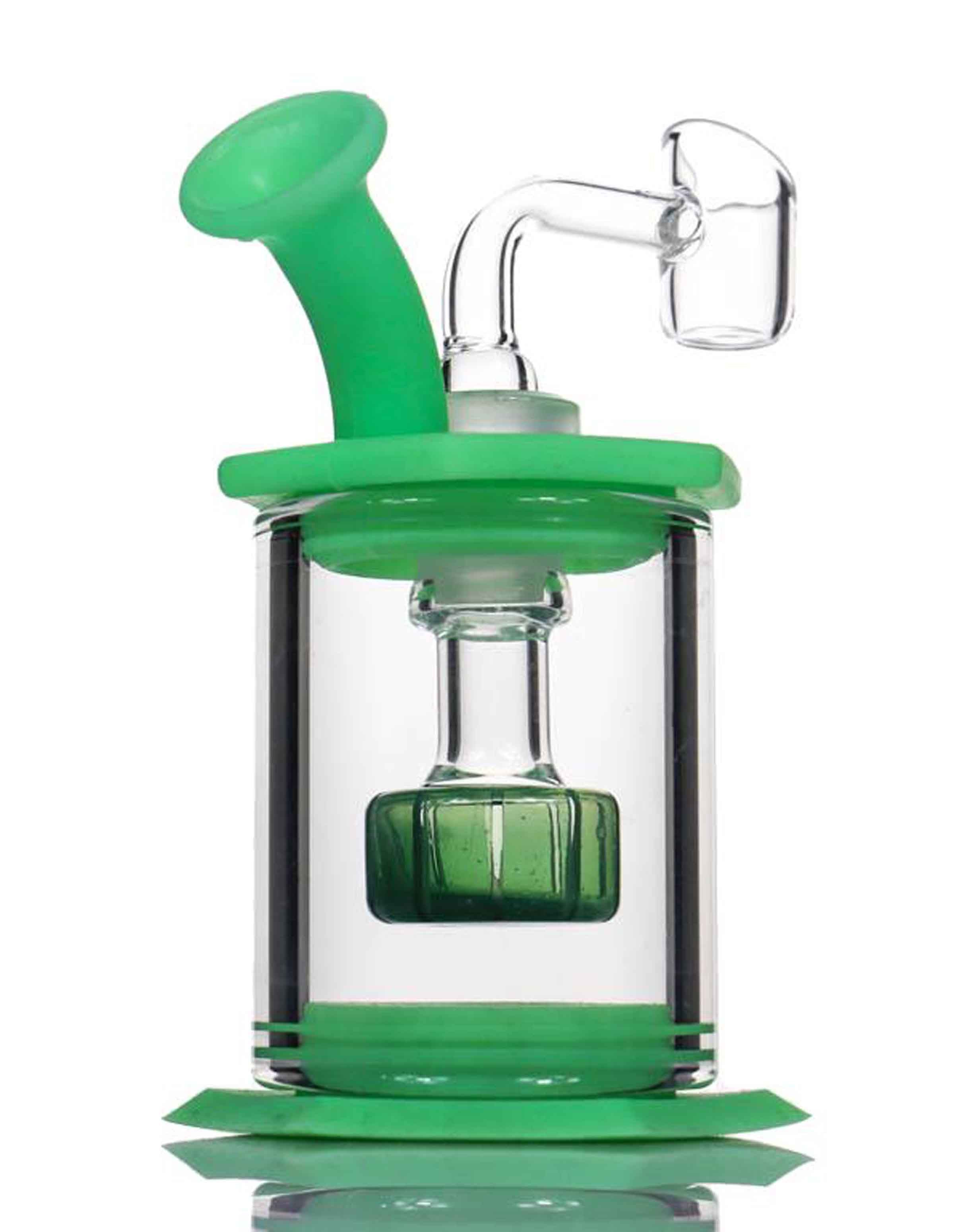Silicone From Insulator To Smoking Pipe
01 Mar 2024
Silicone, initially developed by chemists at Corning Glass and General Electric, has traversed a long journey since its inception in 1943. Originally crafted as an insulator and an alternative to glass fiber resin, silicone's journey from automotive applications to becoming a staple in households highlights its versatility. Today, silicone's applications range from cookware and apparel to electronics, showcasing its functionality across various products, including water pipes, downstems, and concentrate containers.

Silicone: The Inert Polymer
On a microscopic level, silicone comprises repeating units of silicon and oxygen atoms, known as siloxane. This structure classifies silicone as a polymer, akin to plastics, but with superior functionality and stability. Its properties as an elastomer, being stretchy and elastic, make silicone rubber an indispensable material in various applications.
Why Silicone Stands Out for Smokers
Silicone's remarkable heat resistance, maintaining its integrity up to 572 degrees Fahrenheit, far surpasses that of boiling water and even natural rubbers. Its resilience against UV rays, ozone, and aging factors, coupled with its ability to retain its original shape, positions silicone as a superior material for smoking accessories.
Silicone Pipes: A Good and Bad Example
**Good Example:**
A high-quality silicone pipe utilizes medical-grade silicone, ensuring it doesn't affect the taste of the smoke. Its design includes a removable bowl for easy cleaning, and its flexibility allows for secure storage without the risk of damage.
**Bad Example:**
A low-quality silicone pipe might use cheaper materials that can degrade over time, potentially altering the flavor of the smoke. These pipes may also have non-removable parts, making thorough cleaning a challenge and shortening the lifespan of the product.
Comparing Silicone and Glass Pipes
**Pros of Silicone Pipes:**
- **Durability:** Virtually indestructible, making them perfect for travel or outdoor use.
- **Maintenance:** Easier to clean and maintain compared to glass.
- **Cost:** Generally more affordable than glass pipes.
**Cons of Silicone Pipes:**
- **Flavor:** Some users report a slight difference in flavor compared to glass.
- **Heat Resistance:** While high, it's still crucial to use silicone pipes within their recommended temperature limits to avoid damage.
**Pros of Glass Pipes:**
- **Flavor Preservation:** Glass does not alter the taste of the smoke, offering a purer smoking experience.
- **Aesthetic Variety:** Glass pipes come in a vast array of designs and colors.
**Cons of Glass Pipes:**
- **Fragility:** Glass can easily break, requiring careful handling and storage.
- **Price:** High-quality glass pipes can be more expensive than their silicone counterparts.
The Ideal Choice for Concentrate Storage
Silicone's nonstick surface and exceptional heat resistance make it the material of choice for storing concentrates. Its ability to prevent degradation from sunlight and oxygen, along with ease of handling sticky substances, underscores silicone's dominance in concentrate storage over traditional materials.
In the realm of smoking accessories, the transition from glass to silicone represents innovation and adaptability. Whether for durability, ease of maintenance, or cost-effectiveness, silicone pipes offer a practical alternative without significantly compromising on the quality of the smoking experience.
Silicone: The Inert Polymer
On a microscopic level, silicone comprises repeating units of silicon and oxygen atoms, known as siloxane. This structure classifies silicone as a polymer, akin to plastics, but with superior functionality and stability. Its properties as an elastomer, being stretchy and elastic, make silicone rubber an indispensable material in various applications.
Why Silicone Stands Out for Smokers
Silicone's remarkable heat resistance, maintaining its integrity up to 572 degrees Fahrenheit, far surpasses that of boiling water and even natural rubbers. Its resilience against UV rays, ozone, and aging factors, coupled with its ability to retain its original shape, positions silicone as a superior material for smoking accessories.
Silicone Pipes: A Good and Bad Example
**Good Example:**
A high-quality silicone pipe utilizes medical-grade silicone, ensuring it doesn't affect the taste of the smoke. Its design includes a removable bowl for easy cleaning, and its flexibility allows for secure storage without the risk of damage.
**Bad Example:**
A low-quality silicone pipe might use cheaper materials that can degrade over time, potentially altering the flavor of the smoke. These pipes may also have non-removable parts, making thorough cleaning a challenge and shortening the lifespan of the product.
Comparing Silicone and Glass Pipes
**Pros of Silicone Pipes:**
- **Durability:** Virtually indestructible, making them perfect for travel or outdoor use.
- **Maintenance:** Easier to clean and maintain compared to glass.
- **Cost:** Generally more affordable than glass pipes.
**Cons of Silicone Pipes:**
- **Flavor:** Some users report a slight difference in flavor compared to glass.
- **Heat Resistance:** While high, it's still crucial to use silicone pipes within their recommended temperature limits to avoid damage.
**Pros of Glass Pipes:**
- **Flavor Preservation:** Glass does not alter the taste of the smoke, offering a purer smoking experience.
- **Aesthetic Variety:** Glass pipes come in a vast array of designs and colors.
**Cons of Glass Pipes:**
- **Fragility:** Glass can easily break, requiring careful handling and storage.
- **Price:** High-quality glass pipes can be more expensive than their silicone counterparts.
The Ideal Choice for Concentrate Storage
Silicone's nonstick surface and exceptional heat resistance make it the material of choice for storing concentrates. Its ability to prevent degradation from sunlight and oxygen, along with ease of handling sticky substances, underscores silicone's dominance in concentrate storage over traditional materials.
In the realm of smoking accessories, the transition from glass to silicone represents innovation and adaptability. Whether for durability, ease of maintenance, or cost-effectiveness, silicone pipes offer a practical alternative without significantly compromising on the quality of the smoking experience.







